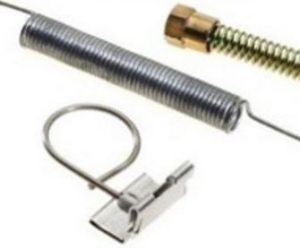 Springs & Things performs stress relieving
Springs & Things performs stress relieving
December 7, 2015 REDWIRE is news you can use from leading suppliers. Powered by FRASERS.
Posted by Springs & Things Inc
Springs and Things delivers the high service levels you would expect from a family-owned springs manufacturing business... Read more
Subscribe
Free REDWIRE e-newsletter

Stress relieving plays a critical role in spring manufacturing, so it is important for industry professionals to understand the process. But according to a recent article in Springs, the Spring Manufacturers Institute magazine, far too many spring makers lack basic knowledge about what stress relieving involves and why it is performed.
To help remedy the problem, Springs has published an article by former SMI president Dan Sebastian explaining the basics of stress relieving.
The need for stress relieving
When metal is stretched, compressed or twisted beyond the elastic limit or torsional yield point, some of that energy gets stored in the metal as a residual stress. This is because the molecular bonds in the metal have been stretched. Depending on which direction the residual stress is oriented, it can be detrimental to a spring’s performance.
The stress relieving process involves heating a spring up to a temperature that allows negative residual stresses to dissipate. Companies such as Mississauga, Ont.-based Springs & Things perform stress relieving as part of their manufacturing process. On the company's website, the manufacturer also provides an explanation of stress relieving.
Process details
Springs & Things stress relieves all of its springs and wire forms shortly after coiling or forming. According to Sebastian, this promptness is important to avoid cracking.
“Chrome silicone-based materials are known to fracture if not stress relieved in a timely manner,” he writes.
Another critical aspect of the process is duration. According to the article, the process must be long enough for the entire part to reach the critical temperature. It suggests manufacturers ensure the core of the part be at set temperatures for at least two to five minutes.
“Moving parts through the oven too quickly will result in under stress relieved parts, which can impair the spring performance,” Sebastian says.
At Springs & Things, the process has a normal tempering time of 30 minutes.
An additional benefit of stress relieving is known as “secondary hardness”. It means that springs that undergo the process offer increased tensile strength and elastic limit. To be exact, stress relieving a spring made from music wire results in a two- to three-point gain in Rockwell C hardness.
Conclusion
Stress relieving is an essential process that requires proper design to get the best results. An experienced manufacturer like Springs & Things is the ideal source.
For more information, contact Springs & Things.
Share
Posted by Springs & Things Inc
Springs and Things delivers the high service levels you would expect from a family-owned springs manufacturing business... Read more